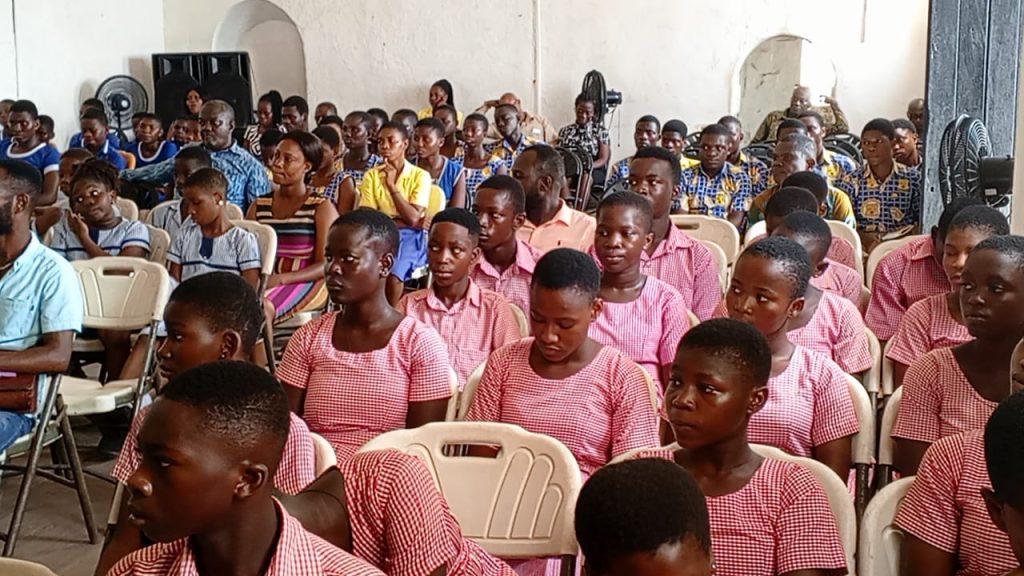The Ghana Museums and Monuments Board (GMMB) says it lacks adequate funding to sufficiently conserve the country’s artefacts and monuments.
Despite being the legal custodian of Ghana’s material cultural heritage (movable and immovable heritage), the Board said the funding setback was adversely crippling the institution’s objective of also providing contemporary and resourceful educational programmes.
“As a matter of urgency, we are calling on the government to focus its attention and commit ample resources to the GMMB.
“The GMMB needs mobile vans or institutional vehicles for its operations. The availability of this equipment will help us to take the museums’ education to schools and communities.”
Mr Kennedy Atsutse, Head of Museums Department in the Central Region, disclosed this at a forum to commemorate the 2024 International Museum Day on Monday.
The Day which fell on Saturday, May 18, was commemorated on Monday on the theme: “Museums for Education and Research.”

The International Council of Museums in 1977, designated the Day to reinforce the opportunity to harmonize all members in a global symphony played in very diverse ways.
Scores of Conservationists, tourism enthusiasts, students, teachers, fishers and journalists marked the Day at the Elmina Castle, Ghana’s first trading post built on the Gulf of Guinea, and the oldest European building existing south of the Sahara.
“Currently, the institution requires support from philanthropists, charity organizations, local and international donors to support its activities,” the GMMB said.
The GMMB has about nine museums across the country namely; National Museum established in 1957 in Accra, Museum of Science and Technology in Accra, established in 1973, Ussher Fort Museum in Jamestown, Accra was founded in 2007.
Others are, Volta Regional Museum in Ho put up 1973, Cape Coast Castle Museum in 1994, Elmina Castle Museum in 1997.
Up northern Ghana, there is Upper East Regional Museum in Bolgatanga set up in 1991,
Also, found in Axim in the Western Region is Fort Anthonio Museum created in 2013, and Fort Appolonia Museum in Beyin put up in 2010.
Mr Atsutse also lamented the lack of required human resources in some critical areas of the institution to achieve its mandate.
He underscored the importance of museums, stating that apart from projecting heritage related issues, museums addressed contemporary problems that plague societies and serve as agents of change.
Through exhibitions, he said museums focused attention of people towards a societal challenge, making people to stop, think and consider their actions.
“Exhibitions on the effects of pollution, teenage pregnancy, sexually transmitted diseases and infections, bad fishing and farming practices raised awareness for attitudinal change.
“The citizenry would become aware of the consequences of these practices as we communicate to them to be more cautious and responsible,” he stated.
Mr Isadore Armah, Executive Director of the Ghana Heritage Conservation Trust (GHCT), stressed the need for protection, preservation, patronage and support for national museums, monuments, eco sites and tourism facilities.
This could be achieved through collecting, preserving, interpreting, and displaying objects of artistic, cultural or scientific significance for the study and education of the public to help safeguard cultural heritage and promote sustainable tourism to promote national integration and cohesion.
Mr Charles Buabin, Central Regional Director of the Ghana Tourism Authority, said Museums held significant importance for tourists as they offer unique cultural and educational experiences.
They provide insights into history, art, and science, enriching the experience of visitors with tangible artefacts and immersive exhibitions.
Similarly, he advocated for clean surroundings at tourist sites as crucial for maintaining a healthy and safe environment for visitors.
He said cleanliness did not only enhance the aesthetic appeal of a place but also contributed to the well-being of both tourists and local communities.
Source: GNA














